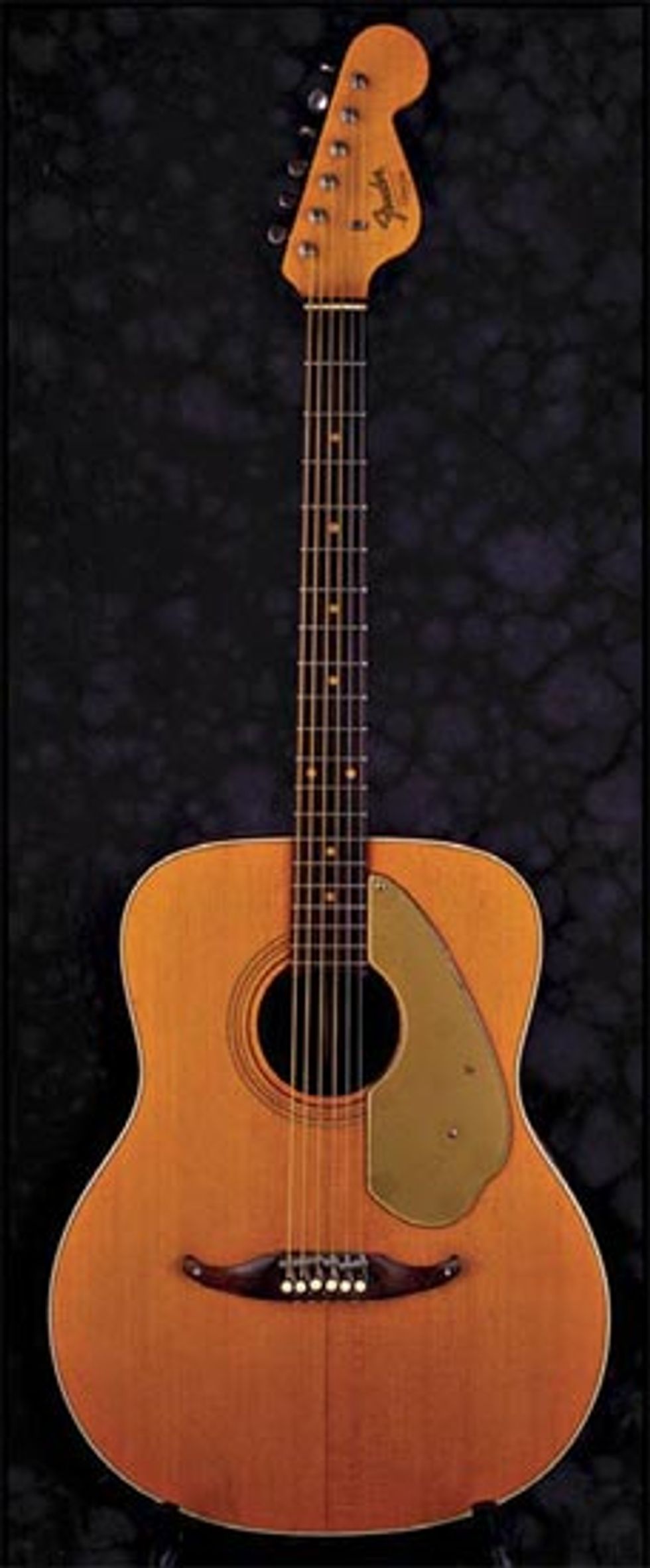Have you been to a garage sale or auction and saw an old acoustic guitar labeled Fender and laughed at the notion? Well, hold your breath because this month in Trash or Treasure we discover Fender has been producing acoustics for over a half a century.
 Dear Trash or Treasure,
Dear Trash or Treasure,A friend of mine was telling me about this Fender acoustic guitar that he has had for several years now, and he was looking for some information and possibly a value on it. I told him that I didn’t even know Fender built acoustic guitars, but he assured me that it was a genuine Fender built during the 1960s or 1970s. Can you verify if this guitar is really a Fender and tell us a little bit about it?
Thanks,
Gerald Hopkins
Jackson, Mississippi
Hi Gerald,
I know you don’t hear “Fender” and “acoustic” in the same sentence very often, but it is true that Fender built a line of acoustic guitars in the 1960s. Fender came into the guitar market running backwards, since many of the other guitar companies at the time (Gibson, Guild, Gretsch, etc.) had started with acoustics and ventured into electrics later on. Although electric guitars were by far the guitar of choice during the 1960s, acoustics were still popular among country and folk artists. Leo Fender took note of this and jumped headfirst into acoustic guitar manufacturing during the early 1960s.
Before we get into the development and production of the first Fender acoustics, I have to mention that Fender acoustics existed before 1963. Fender distributed acoustic guitars that were branded “Fender,” but these guitars were mainly built by Harmony of Chicago – none were actually Fender-built. If you see any of these older, small-bodied Fender acoustics, you’ll see the resemblance to many Harmony acoustics. Although Leo Fender had the idea of an acoustic line for Fender, it was Roger Rossmeisl who really made Fender acoustic guitars possible. Rossmeisl had worked for Rickenbacker during the late fifties and early sixties designing their acoustic/electric guitars. Rossmeisl moved to Fullerton, California, before he even had a job at Fender because he was confident that Fender would hire him. Rossmeisl walked into Fender’s office and they hired him on the spot to develop the acoustic guitar line.
Fender’s first run at acoustics can be best described as having a full mix of Fender and Rickenbacker-style appointments. Noticeable Fender features include the Strat-style headstocks, maple bolt-on necks and an adjustable truss rod. Features borrowed from Rossmeisl’s time at Rickenbacker included checkered binding and gold Lucite pickguards. Fender’s acoustics had a unique bracing system that was designed to greatly increase the structural support of the guitar so the actual top could be built thinner. Also, the bridge had an extreme moustache and individual saddles to aid in intonation.
The model your friend has is a Fender Concert that was produced between 1963 and 1970 (three other models including the King, Classic and Folk were all introduced at the same time at the 1963 NAMM show). Unfortunately, there is no way to date these guitars by serial numbers because the guitars were built at a different plant and a different serialization system was used (this system had not been coded at this point). Fender found out quickly that there is a lot more art to building acoustic guitars than there is to electric guitars. Most players agree that these guitars sound okay, but they are definitely unique in visual appearance and were never well received by guitarists. CBS tried to expand the line once they took over in 1965 by introducing more models and continuing to advertise, but by 1969 they saw that the product line was a failure and by 1970 they were deleted from Fender’s catalog.
Your friend’s guitar looks to be in excellent condition and I’d value this guitar between $800 and $950. It is also useful to know that the older the guitar, the more it is worth, and if you can prove that this guitar was built before 1965, it will be worth a little more. I haven’t heard of many people that crave the sound of a 1960s Fender acoustic, but if your friend likes the guitar and he isn’t looking to make thousands by selling it, then this guitar is a real treasure that you now know exists!
Source: Fender: The Sound Heard ‘Round The World by Richard R. Smith
Zachary R. Fjestad
Zachary R. Fjestad is the author of the Blue Book of Acoustic Guitars, Blue Book of Electric Guitars, and the Blue Book of Guitar Amplifiers.
Questions can be submitted to:
Blue Book Publications
Attn: Guitar Trash or Treasure
8009 34th Ave. S. Ste #175
Minneapolis, MN 55425
800-877-4867
www.bluebookinc.com
guitars@bluebookinc.com
Please include pictures of your guitars.

